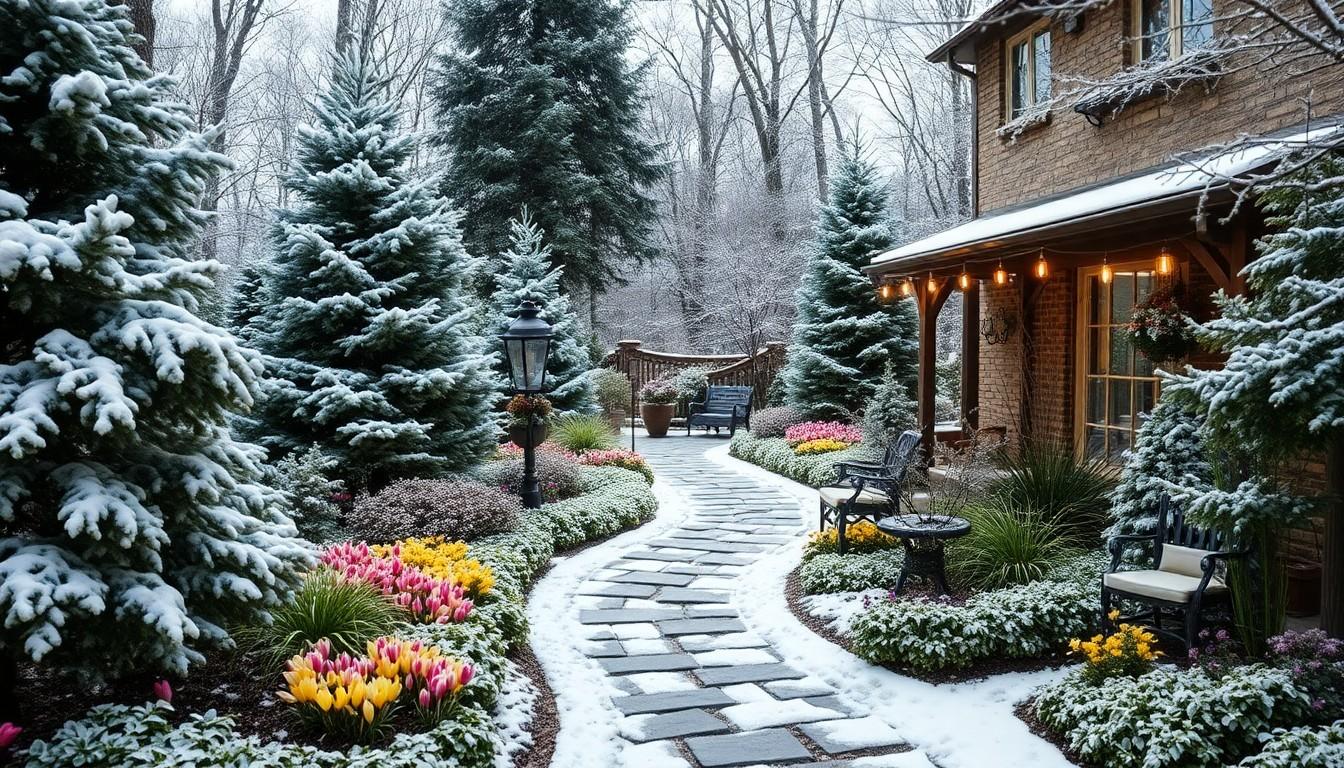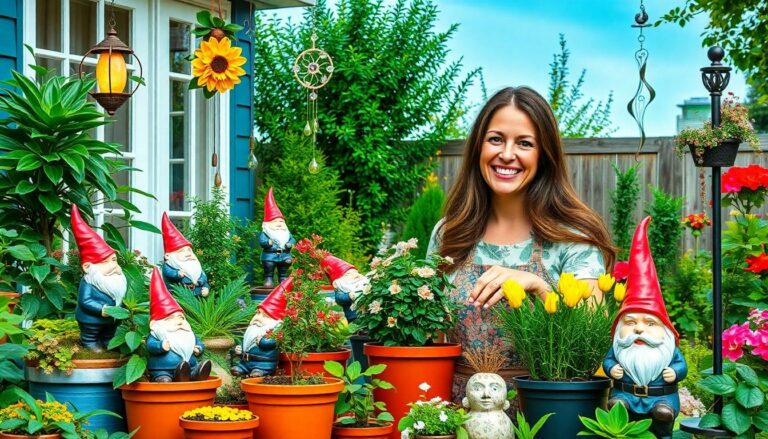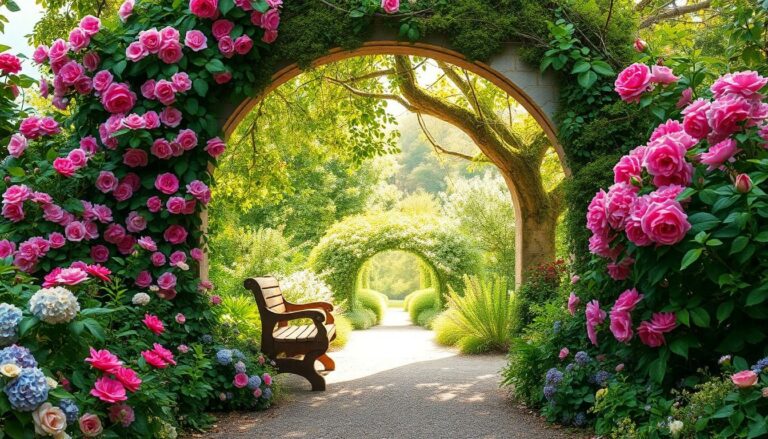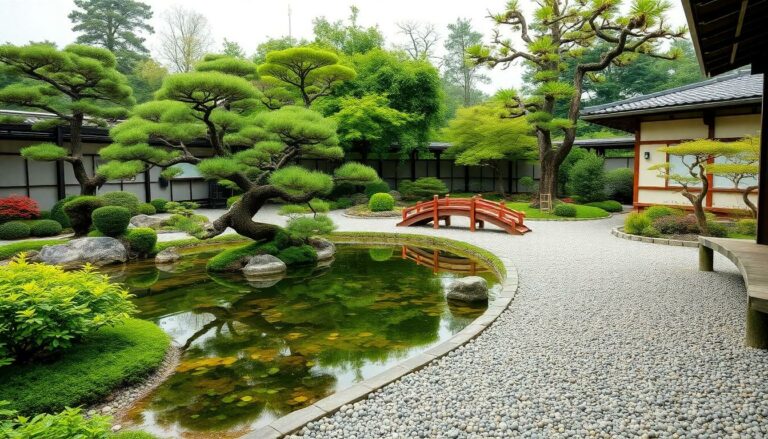As winter blankets the world in a frosty embrace, the allure of a winter garden becomes undeniable. Picture this: glistening snowflakes dancing on vibrant evergreens, delicate frost adorning the leaves, and the crisp air filling the lungs with a refreshing chill. It’s not just a garden; it’s a winter wonderland that transforms the mundane into the magical.
Creating a winter garden isn’t just for the green-thumbed elite. Anyone can cultivate a space that dazzles even in the coldest months. With the right plants and design, a winter garden can become a cozy retreat that invites joy and tranquility. So grab that shovel and let’s dig into the enchanting aesthetics of winter gardens, where beauty thrives even when the thermometer drops. After all, who says winter can’t be fabulous?
Aesthetics of Winter Garden
Winter gardens provide a stunning visual appeal, showcasing nature’s beauty even in the cold months. They create serene spaces, filled with contrasting textures and colors.
Historical Context
Winter gardens emerged in the 17th century as a way to enjoy nature during winter. Wealthy families built orangeries to cultivate citrus fruits, showcasing exotic plants. Over time, this concept evolved, incorporating broader plant selections to create lush, vibrant displays. Today, winter gardens continue the tradition of harmoniously blending architecture with nature.
Key Elements
Essential components define the aesthetics of winter gardens. Evergreen plants provide year-round structure and depth. Colorful foliage adds visual interest, especially in stark winter landscapes. Incorporating decorative elements, like sculptures or seating, enhances enjoyment. Lighting plays a crucial role, illuminating pathways and highlighting key features. These elements together create tranquil environments, inviting comfort during the chill of winter.
Design Principles for Winter Gardens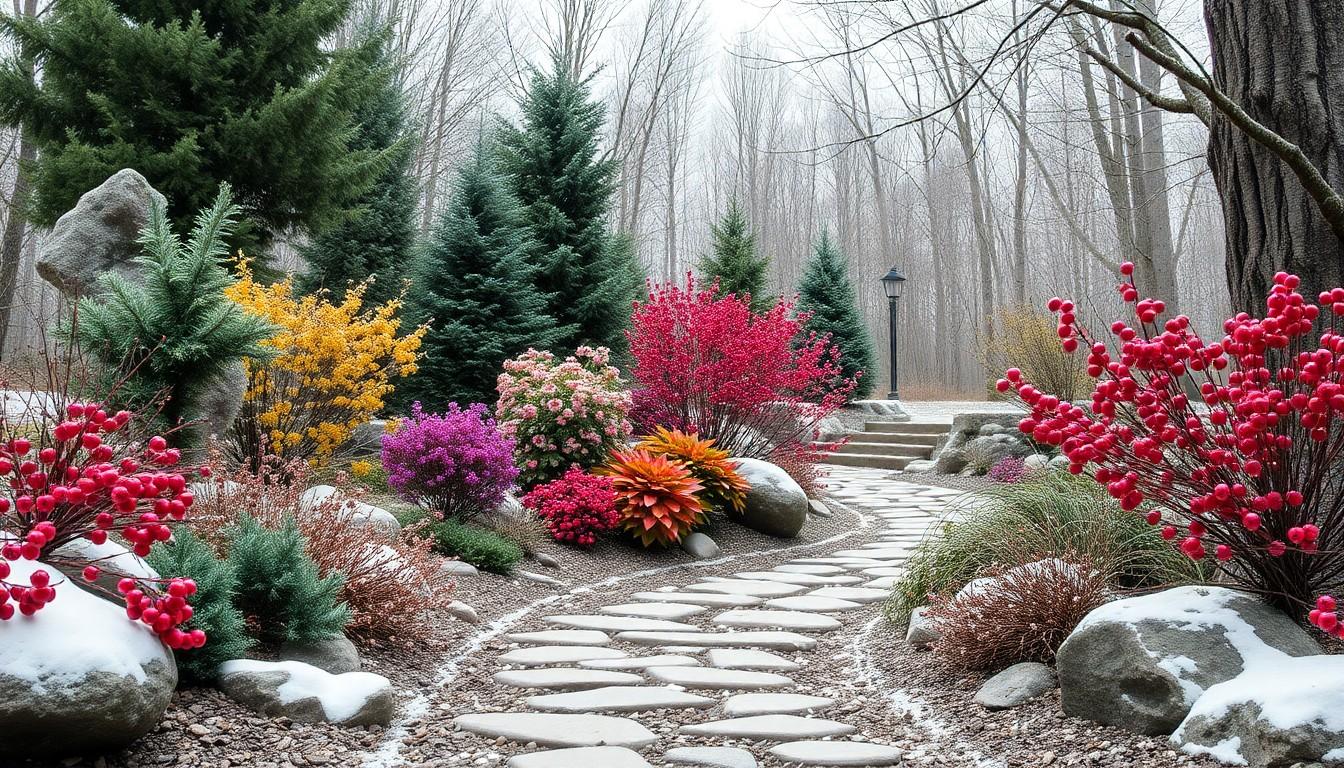
Design principles play a crucial role in creating aesthetically pleasing winter gardens. Focus on balance and harmony, which ensures that each element complements the others, fostering a serene atmosphere.
Balance and Harmony
Achieving balance involves distributing visual weight equally throughout the garden. Consider using large evergreen trees alongside smaller shrubs to create a sense of equilibrium. Arranging plants in groups improves cohesion, while varying heights prevents monotony. Utilizing pathways to direct movement adds structure to the space. When selecting decorative features, such as benches or sculptures, place them strategically to enhance harmony with surrounding flora. Effective use of space fosters tranquility, inviting visitors to relax in the serene environment.
Color and Texture
Colors and textures enhance the visual appeal of winter gardens. Incorporating a mix of evergreen plants, winter-blooming flowers, and colorful berries creates vibrant contrasts. Consider pairing soft-textured foliage with smooth surfaces to add depth. Textured elements, such as tree bark or decorative stones, contribute to an inviting landscape. Bright hues, like reds and yellows, stand out against the muted winter backdrop, drawing the eye. Employing varied leaf shapes enriches the garden’s landscape, making it visually stimulating year-round.
Seasonal Changes in a Winter Garden
Seasonal changes in a winter garden showcase unique beauty and adaptability. Each phase introduces new elements that enhance visual appeal.
Winter Blooms
Winter blooms provide vibrant colors amidst stark winter landscapes. Plants like Hellebores and Camellias often bloom during this period, adding cheer. Snowdrops and Crocuses emerge as early signs of life, brightening the garden with their delicate structures. These flowers thrive even in cold temperatures, demonstrating resilience in challenging conditions. Gardeners can include these winter-blooming varieties for continuous interest and charm.
Foliage Variation
Foliage variation adds depth and character to winter gardens. Different textures and shades create visual contrast, appealing to the eye. Evergreen shrubs, such as Boxwood and Holly, maintain their lush appearance while accenting barren surroundings. Additionally, deciduous plants, like Birch and Red Twig Dogwood, contribute striking bark color throughout the season. This combination fosters a dynamic atmosphere, ensuring the garden remains engaging even during winter’s cold grip.
Creating a Cozy Atmosphere
A cozy winter garden invites relaxation and enjoyment amid chilly surroundings. Thoughtful details create an inviting space.
Lighting Techniques
Strategically placed lights enhance the winter garden’s ambiance. Uplighting on evergreen plants creates dramatic shadows. Use string lights to wrap around branches and create a magical effect. Pathway lights facilitate safe navigation while adding warmth. Solar-powered options offer eco-friendly illumination. Incorporating lanterns or candles on tables nurtures a defined atmosphere. Layering different types of lighting adds depth and dimension, inviting exploration.
Furniture and Accessories
Selecting the right furniture enhances comfort throughout the winter garden. Cozy seating arrangements encourage extended relaxation. Choose weather-resistant materials for durability against winter elements. Add cushions and throws for warmth and visual appeal. Incorporating tables provides a convenient spot for drinks or small bites. Decorative pots and planters contribute personal touches that reflect style. Hanging bird feeders attract wildlife and provide liveliness to the space. Choosing accessories thoughtfully ensures an aesthetic that complements the serene winter backdrop.
Beauty and Tranquility
Embracing the aesthetics of a winter garden transforms the cold months into a season of beauty and tranquility. By thoughtfully selecting plants and design elements, anyone can create a stunning outdoor retreat that captivates the senses. The interplay of colors textures and light can turn an ordinary space into a serene escape.
Winter gardens not only provide visual appeal but also invite moments of reflection and relaxation. With the right balance of evergreen plants and seasonal blooms it’s possible to cultivate an inviting atmosphere that remains vibrant throughout winter. This enchanting approach to gardening encourages individuals to find joy in the season and appreciate the unique charm that winter brings.
